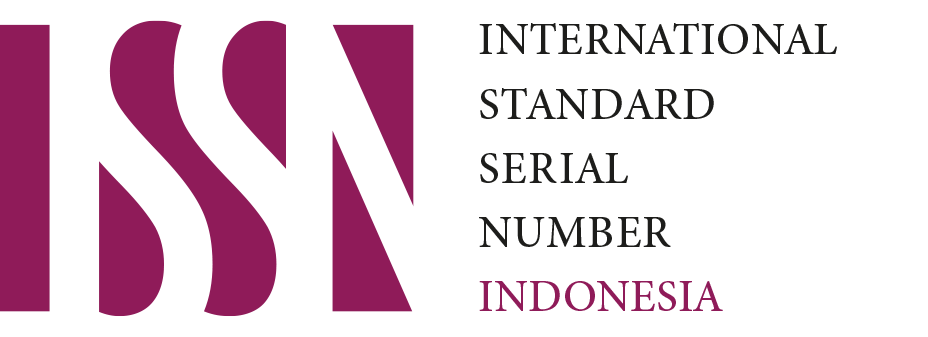Platelet Count in Dengue Fever Patients
Abstract
Dengue hemorrhagic fever (DHF) is an acute infectious disease caused by the dengue virus. This virus is transmitted by mosquitoes from the genus Aedes, for example Aedes aegypti and Aedes albopictus. Patients who are infected will have symptoms in the form of a mild to high fever, accompanied by headaches, pain in the eyes, muscles and joints, and spontaneous bleeding. DHF in Indonesia, has become a public health problem for the last 45 years since 1968. These cases are spread across 33 provinces and in 436 districts / cities out of 497 districts / cities (88%) in Indonesia. The number of people with Dengue Hemorrhagic Fever (DHF) tends to increase. The laboratory chooses to use a blood cell counter or a hematology analyzer to count the patient's blood cell count. The results of laboratory examinations with platelet counts in dengue fever patients were obtained 19 (14.84%) samples of patients with platelets d below 100,000 per micrometer (mcL) from 128 patients from January to March 2019. With 2 days of fever patients were 44 people. , 37 patients had fever for 4 days, and 5 fever patients were 47, in normal numbers and brought to a normal range of 150,000-400,000/ mmᶾ.
Keywords
Full Text:
PDF (Bahasa Indonesia)References
Avirutnan P, Malasit P, Seliger B, Bhakti S, Husmann M. (1998). Dengue Virus Infection of Human Endothelial Cells Leads to Chemokin Production, Complement Activation, and Apoptosis. J Immunol;Vol 161:6338-46.
Carr JJ, Brown JM. (2001). Introduction to Biomedical Equipment Technology, 4th ed. Prentice Hall, Columbus, Ohio.
Darwis D. (1999). Kegawatan Demam Berdarah Dengue Pada Anak.Naskah lengkap, pelatihan bagi dokter spesialis anak dan dokter spesialis penyakit dalam pada tata laksana kasus DBD. Jakarta: Penerbit Fakultas Kedokteran Universitas Indonesia.
Depkes RI. (2006). Pedoman Penyelenggaraan dan Prosedur Rekam Medis. Rumah Sakit di Indonesia. Jakarta: Depkes RI. Dewi SC. 2012.
Depkes RI. (2013). Pedoman Penyelidikan dan Penanggulangan Kejadian Luar Biasa Demam Berdarah. Jakarta: Departemen Kesehatan RI.
Depkes. (2004). Buku Pedoman Penyelidikan dan Penanggulangan Kejadian Luar Biasa. Jakarta: Departemen Kesehatan RI.
Dewi BE, Takasaki T, Sudiro TM, Nelwan R, Kurane I. (2007). Elevated Levels of Solube Tumour Necrosis Factor Receptor 1, Thrombomodulin and Solube Endothelial Cell adhesion Molecules in Patients with Dengue Hemorrhagic Fever. Dengue Bulletin : Vol 31:103-10.
Kurane I. (2007). Dengue Hemorrhagic Fever with Spesial Emphasis on hogenesis. Comparative Immunology, Microbiology & Infectious Disease; Vol 30:329-40.
Koraka P, Suharti C, Setiati CE, Mairuhu AT, Van Gorp E, Hack CE, et al. (2001). Kinetics of Dengue Virusspecific Immunoglobulin Classes and Subclasses Correlate with Clinical Outcome of Infection. J Clin Microbio;Vol. 39 4332-8.
Kinney, M. Huang,CY.Rose, BC. Kroeker, AD. Drecher,T. Patrick,I. Stein,D. (2005). Inhibition of Dengue Virus Serotipe 1-4 in Vero cell Cultures with Morpholino Oligomers. Journal of Microbiology. 79(8):5116-5128 : Dalam Chamber,T. Schlesingers,J. Davidson,D. et al.2003. Yellow virus/Dengue 2 and Yellow fever/Dengue 4 Chimeras: Biological Characterization, Immunogenicity, and Protection against Dengue Encephalitis in Mouse Model.Journal of Virology.77(6):3655-3668.
Kresno SB. (1996). Nilai rujukan. Laporan Kegiatan Perhimpunan Dokter Spesialis Patologi Klinik Indonesia (PDS Patklin) Jakarta.
Lestari K. Epidemiologi Dan Pencegahan Demam Berdarah Dengue (DBD) Di Indonesia. Farmaka. Desember 2007; Vol. 5 No. 3: hal .12-29.
Massi,M.N. Sabran,A. (2006). Teknik Identifikasi Serotipe Virus Dengue (Den 1-4) dengan Uji Reverse Polymerase Chain Reaction (RT-PCR). Fakultas Kedokteran Universitas Hasanudin.
Siregar, A.F. (2004). Epidemiologi dan Pemberantasan Demam berdarah Dengue di Indonesia. Fakultas Kesehatan Masyarakat Universitas Sumareta utara.
Sowandoyo E, editor. Demam Berdarah Dengue pada Orang Dewasa, Gejala Klinik dan Penatalaksanaannya.Seminar Demam Berdarah Dengue di Indonesia 1998; RS Sumberwaras. Jakarta.
Soegijanto S. (2003). Prospek Pemanfaatan Vaksin Dengue Untuk Menurunkan Prevalensi di Masyarakat. Dipresentasikan di Peringatan 90 Tahun Pendidikan Dokter di FK Unair; Surabaya.
Soegijanto S. Patogenesa dan Perubahan Patofisiologi Infeksi Virus Dengue. www.pediatrikcom/buletin/20060220-8ma2gi-buletindoc;2002 [cited 2010]; Available from: www.pediatrikcom/buletin/20060220-8ma2gi-buletindoc.
Scanlon VC, Sanders T. (2006). Buku Ajar Anatomi dan Fisiologi, 3rd ed. ECG, Jakarta.
Strachan TR, Andrew P. (1999). Human molecular genetics. University of Newcastle, University of Manchester. r (2 ed.).
WHO. (2011). Dengue: Guidlines for Diagnosis, Treatment, Prevention and Control. New Edition. Geneva: World Health Organiza-tion.
DOI: https://doi.org/10.31983/jlm.v2i1.6895
Article Metrics
Refbacks
- There are currently no refbacks.
Copyright (c) 2021 Jaringan Laboratorium Medis

This work is licensed under a Creative Commons Attribution-ShareAlike 4.0 International License.
--
OFFICE INFORMATION :
Jurusan Analis Kesehatan - Kemenkes Poltekkes Semarang, https://analis.poltekkes-smg.ac.id Jl. Wolter Monginsidi No. 115 Pedurungan Tengah, Semarang, Jawa Tengah, Indonesia ; Email: jlm@poltekkes-smg.ac.id
 Jaringan Laboratorium Medis disseminated below Creative Commons Attribution-ShareAlike 4.0 International License.
Jaringan Laboratorium Medis disseminated below Creative Commons Attribution-ShareAlike 4.0 International License.
Our Related Accounts :
 |  |  | |||||
| MoU PATELKI | ISSN BRIN | Google Scholar | Garuda | Stat Counter | DOI Crossref |
| Jaringan Laboratorium Medis © 2019 |









